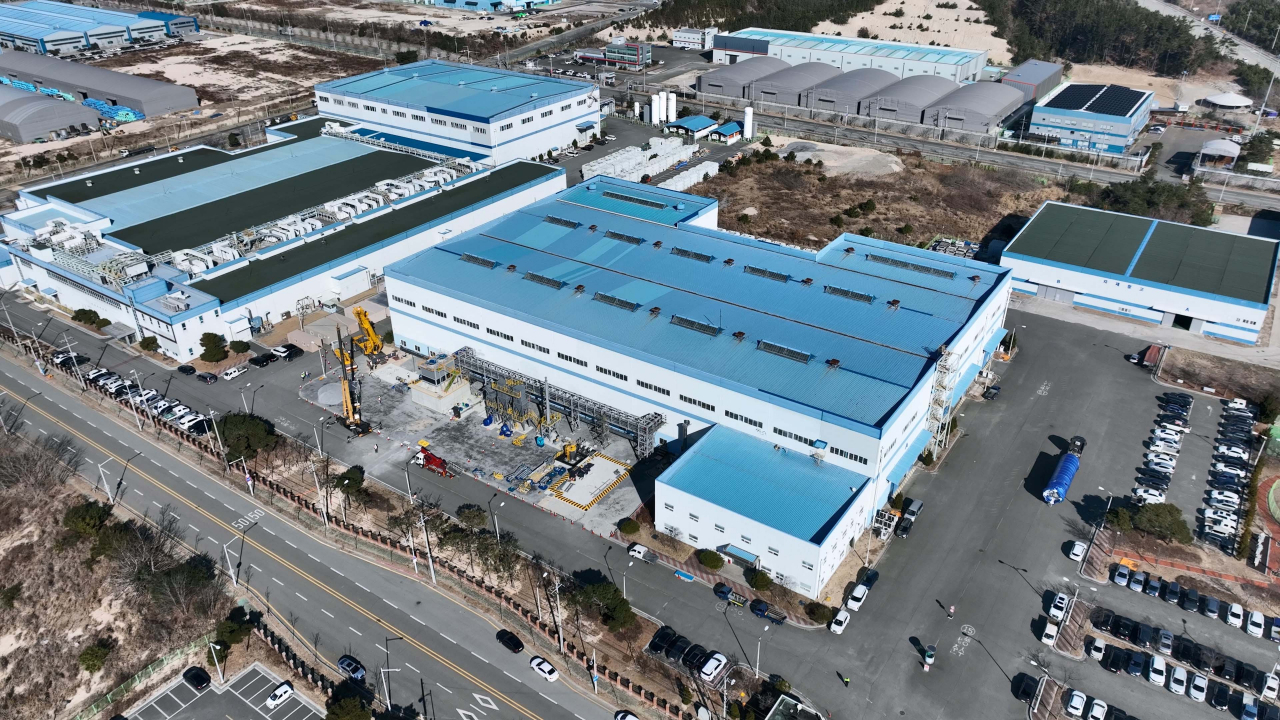 |
Posco's silicon anode material plant at the Yeongil Bay industrial complex in Pohang (Posco Group) |
Posco Group announced Tuesday the completion of a manufacturing plant specifically designed to produce silicon battery materials, laying the groundwork for next-generation secondary battery materials venture.
Its battery materials unit Posco Silicon Solution completed a silicon anode material plant in the Yeongil Bay industrial complex of Pohang, North Gyeongsang Province, on Friday.
Silicon anode material is a next-generation alternative boasting four times the energy density of graphite anodes, which are currently utilized in most lithium-ion batteries. The material is studied to enhance electric vehicle range and shorten charging times.
The group highlighted that the operation, capable of supplying 550 metric tons of materials each year, enough for 275,000 electric vehicles, represents a substantial scale-up.
The newly established facility will integrate into the entire production line, enabling Posco Silicon Solution to swiftly respond to business demand for silicon anode materials.
Meanwhile, Seoul-based market tracker SNE Research projects a significant expansion in the global silicon anode material market, with estimates indicating a surge from around 10,000 tons to approximately 285,000 tons by 2035.
In a strategic move to fortify its anode material portfolio, Posco acquired a silicon anode material technology startup Terra Techos, in July 2022, rebranding it as Posco Silicon Solution. Construction of the silicon anode material plant commenced in April the next year.
The completion of the downstream process on Friday marks a milestone, with the entire project, including the upstream process, scheduled for completion in September.
Posco Silicon Solution aims to achieve an annual production capacity of 25,000 tons of silicon anode materials by 2030.
The group said its strategic vision involves strengthening the value chain of secondary battery materials, encompassing lithium and nickel, while also enhancing the competitiveness of next-generation alternatives such as silicon anode materials, lithium metal anode materials and solid-state electrolytes.




![[Weekender] Korea's traditional sauce culture gains global recognition](http://res.heraldm.com/phpwas/restmb_idxmake.php?idx=644&simg=/content/image/2024/11/21/20241121050153_0.jpg)


